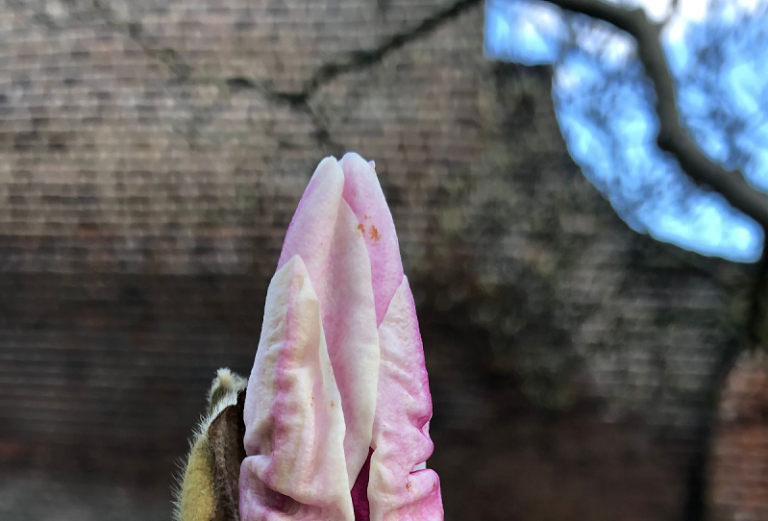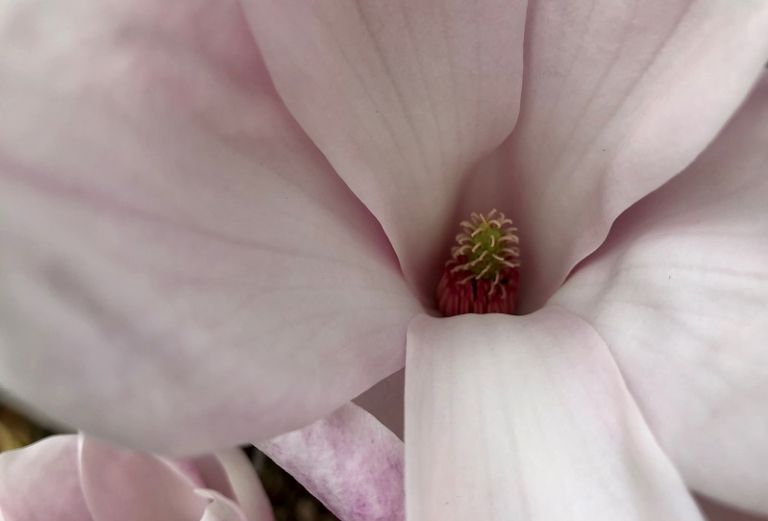
Written by garden apprentice Patricia Stadler.
As the first hint of spring is announced by the signs of early flowering bulbs, the equinox is defined by the glorious flowering of the saucer magnolia. Standing proud and elegant next to the Tudor gate, our iconic magnolia (Magnolia x soulangeana) welcomes visitors into the grade II* listed walled garden at Fulham Palace. Magnolia x soulangeana is an early flowering deciduous tree that blooms before the leaves appear. Wearing a protective furry coat, the buds have been waiting all winter to finally swell up, strip down and start to show. The pink and white flowers create a stunning cloud that one should not miss!
Magnolias are special to Fulham Palace, the first species of magnolia to be cultivated in England was a swamp magnolia (Magnolia virginiana) introduced by Bishop Henry Compton to the garden at Fulham Palace over 300 years ago.

Stunning in beauty alone, the magnolia trees also have a long and interesting story to tell. As one of the oldest flowering trees (angiosperms), fossilized specimens date to 105 million years ago. At that time, most trees were non-flowering conifers (gymnosperms) that would be pollinated either by wind or water. When looking closely at the primitive flower of a magnolia there are comparisons that can be made with the reproductive system of the conifers.

But a difference to conifers is that magnolias’ pollinators are beetles. Why not bees you ask? Because bees were not even around at this time of year! But beetles are rather clumsy at their task, their mouthparts are made for chewing rather than for gathering nectar and pollen so, attracted by the spicy scented nectar, beetles get carried away and eat parts of the flower. In response, the magnolia produces tough, leathery flower petals and thick carpels to protect the reproductive system from their greedy pollinators.
The magnolia by our walled garden gate will be flowering until May so make sure to see it for yourself! The Fulham Palace botanic garden is open daily dawn – dusk and the walled garden from 10.15 – 15.45.
Learn more about some of the plant specimens introduced by Bishop Compton.
Did you know?
The magnolia tetals (petals and sepals) are actually also edible to humans. Served in Japan as a delicatessen either pickled or dried as a tea, the flowers are said to have a general ginger-cardamon flavour. Magnolia x soulangeana in particular is meant to have a hint of bitter orange and black pepper.